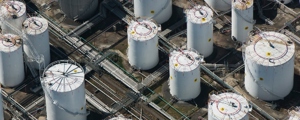A Case for Criteria that Simplify Process Vessel Lining Selection
Maximize Vessel Lives, Streamline Operations and Reduce Costs
Process vessels, also known as pressure vessels, deliver a critical function within oil and gas upstream operations. Subjected to elevated temperatures and pressures, these vessels are used to process hydrocarbon mixtures to remove corrosive materials from oil before transport. Asset owners and operators expect pressure vessels to remain in operation consistently, while performing over the long term to ensure productivity for hydrocarbon processing operations.
Linings are frequently used to mitigate corrosion inside process vessels and extend their service lives and maintenance cycles. Their long-term performance is important, as is the ability to return vessels to service quickly when maintenance is required. Therefore, specifiers often choose easy-to-apply and fast-curing lining technologies to reduce the time vessels are out of service.
Ultimately, all parties involved in choosing linings for process vessels would benefit from an optimized standard that offers directly comparable testing and data reporting. Achieving this goal would, in turn, help key stakeholders specify linings that maximize vessel lives and streamline operations, helping them to also reduce costs.
Our experts offer a variety of factors to consider when choosing tank linings.







Comments